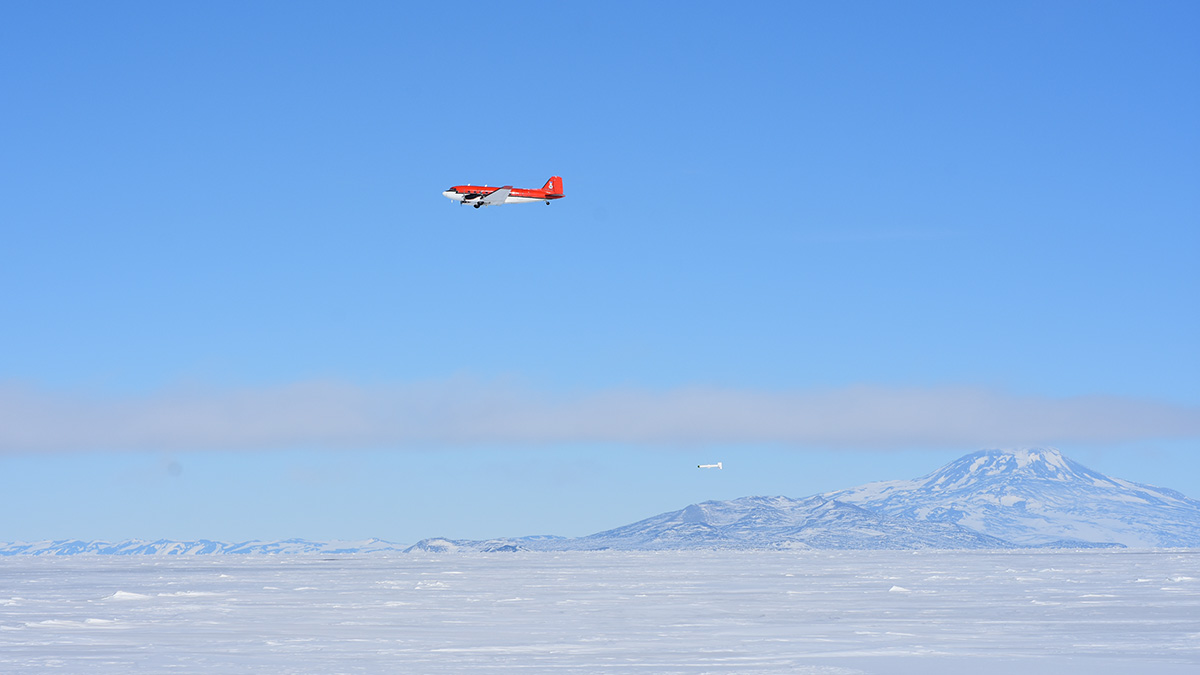Source: Journal of Geophysical Research: Oceans
Ice at the edge of the Antarctic continent hosts a flourishing ecosystem. Seals and penguins breed, fish mature, and algae thrive, all thanks to sea ice tethered to the shore, called fast ice. To understand how fast ice protects this ecosystem and to assess the area’s health and future, scientists need to gauge how thick shore-bound ice is along the different parts of the coast—an estimate that has eluded scientists in the past.
In a new study, Langhorne et al. provided more reliable estimates of Antarctic fast ice thickness by measuring it from an airplane. This technique is an improvement on previous efforts. For example, it has a wider geographic range than drilling into the ice; it can penetrate sea ice, unlike radar; and it provides more certain estimates than satellites.
The method, called airborne electromagnetic induction sounding, uses a device called a “Bird” towed beneath the aircraft at an altitude of just 15 meters (45 feet). The Bird transmits a magnetic field through the ice and into the conductive seawater. There, the magnetic field induces tiny electric currents that the Bird can detect to tell the scientists how thick the ice is.
The researchers used the system to survey a 700-kilometer-long section of coast in the Ross Sea, a huge embayment in the Southern Ocean that is home to the Scott Base, McMurdo, and Zucchelli research stations. The area is known for its floating glaciers and ice shelves, both of which are stabilized by fast ice.
During their survey in November 2017, fast ice in the region was about 3 meters thick on average, with the most common thickness being 2 meters. About half of the surveyed ice was rough—the result of being pummeled against the shore by storms. Meltwater from beneath ice shelves and floating glaciers formed a slushy layer of ice crystals up to 10 meters thick below some of the fast ice.
The measurements provide a baseline for future studies, the authors say. With this information, they hope to track Antarctic fast ice as Earth changes and the climate warms. (Journal of Geophysical Research: Oceans, https://doi.org/10.1029/2022JC019459, 2023)
—Saima May Sidik (@saimamaysidik), Science Writer

